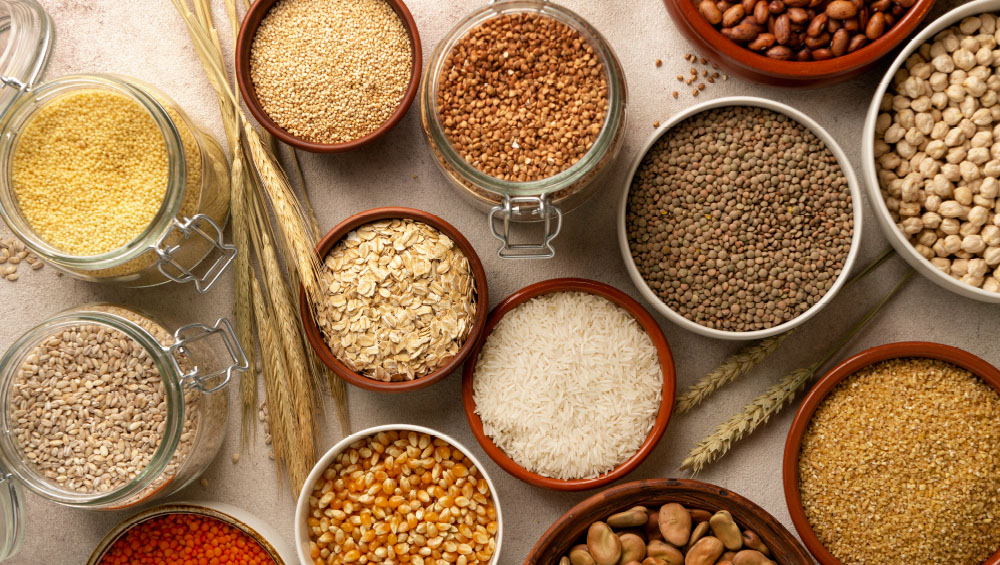No products in the cart.
How do Millets help in Diabetes management? Facts vs. Myth
Does Millet help you control your diabetes?
Sometime back, A group of people came to seek my advice to treat a very unusual condition with Ayurveda.
The discussion shifted to how diabetes has spread like an epidemic in their region and the possible reasons for it.
According to them, one reason was socio-economic, consumerism has taken over simplicity of existence, and urbanization of the village landscape has taken place.
In their anecdotal view – 50 years back, not even 50 till 30 years back there was hardly any obese person in their village or region. There was no diabetes. Ever since wheat & rice have invaded the kitchen obesity and diabetes have become rampant.
In the assessment of local ayurvedic & allopathic doctors, ever since the native people migrated to wheat and rice from jawar & ragi, both obesity and diabetes have seeped into the lives of people.
This insight from the Maharashtrian folks got me to further study this Millets vs. Wheat plus rice debate.
The Glycemic Index (GI) of Millets is low and it has been common knowledge among those who have been eating Millets over wheat and rice.
Now there is a growing awareness amongst modern science doctors, leading to the recognition of millets in helping manage diabetes.
Various studies have statistically shown that the mean GI of millets is 52.7 ± 10.3, about 36% lower than rice (71.7 ± 14.4) and refined wheat (74.2 ± 14.9). (Credits for this information – we have taken this information from National Center for Biotechnology Information.
The good part of Millet consumption is that it helped lower the fasting and post-prandial blood glucose levels by 12% to 15%, respectively, in diabetic people. It was also observed millet consumption led to a significant reduction in HbA1c level (from 6.7 to 5.7) among pre-diabetic subjects.
Studies conducted by several scientific institutions have validated that millets not only help in the management of diabetes, they also help in reducing the risk of developing diabetes.
The qualitative dimension of Millets is also impressive. They are rich in fiber, Vitamins, Minerals, and Antioxidants. The best part is that they are gluten-free too.
The low GI index of Millet helps keep blood sugar regulated. It also leads to lower cholesterol and helps in weight management.
How do Millets impact blood sugar levels?

Millets are whole grains. It has outer layers, the bran, and germ leading to high fiber content.
Processed Food companies take away these layers containing fiber to grind refined grains like white flour. The human body needs a longer time period to digest Millets, therefore Millets does not increase blood sugar as fast as refined grains do.
Various types of Millets commonly grown in India include Jowar (sorghum), Bajra (pearl millet), ragi (finger millet), Jhangora (barnyard millet), Barri (Proso or common millet), Kangni (foxtail/ Italian millet), Kodra (Kodo millet), etc.
Migrate from wheat and rice to millet
Most of us have grown up eating wheat and rice. It takes a while to develop a taste for the millet.
Most do not get the satisfaction of enjoying a meal after eating millet, we miss the taste of wheat & rice. The process of migration can be slow but it is healthier.
A good way is to start one meal with Millets and gradually migrate to Millets as the staple grain for all meals.
You may also consider Diabza an herbal supplement for Diabetes/Blood Sugar. It contains herbs known to benefit people with Diabetic conditions/Blood Sugar in a holistic manner. In times to come a hybrid system of medicine may emerge wherein doctors will prescribe both Modern & Ayurvedic formulations for the larger good of people.

You may visit Diabza – https://www.teachersgrace.com/product/diabza-herbal-supplement-for-sugar/


